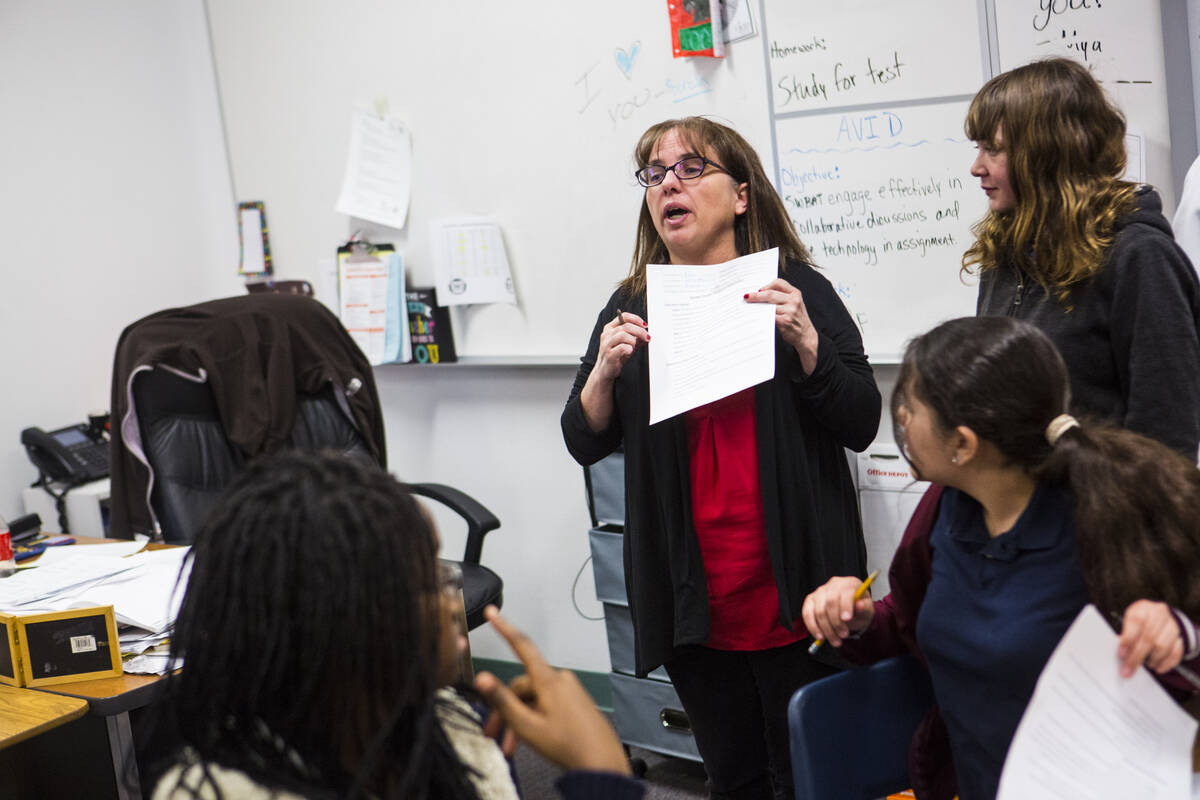VICTOR JOECKS: CCSD’s teacher shortage is worse than you think
The kids in the worst Clark County School District schools are the least likely to have a full-time teacher. That’s a major problem.
As of late last week, the district has more than 1,200 job openings for licensed personnel. The vast majority of those vacancies are for teachers, although they also include positions such as counselors and nurses. The teacher shortage has been well documented. But what’s little discussed is where those openings are located.
The district had 54 four- or five-star schools last year. At those locations, jobs are scarce. Among the 26 five-star schools, there are just 30 job openings. The number is similar in the 28 four-star schools. They have a combined 40 job openings.
It’s a different story in the lowest-performing campuses. The district has 113 one-star schools. They have a combined 529 openings, an average of 4.7 per school. This analysis includes only regular district schools, not alternative or special education schools.
At some campuses, vacancies are so high, you wonder how the school functions. Johnston Middle School has 24 vacancies. The school is looking for seven math teachers and a math and science learning specialist. It also needs six English teachers.
Tartan Elementary School has 12 openings. It’s looking to hire teachers for every grade from K through fifth. In half of those grades, it wants to hire two teachers. Cheyenne High School has 23 openings.
Those schools have something else in common. They’re all in North Las Vegas. The schools with the most job openings are clustered in North Las Vegas, the urban core and east Las Vegas.
Poverty is another factor. Title 1 schools serve lower-income students. There are 254 Title 1 schools. They have 1,035 job openings, an average of more than four per school. The 84 non-Title 1 schools have just 117 open positions.
See the pattern? The high-performing schools in the wealthiest parts of the valley easily fill their vacancies. The worst-performing schools in the poorest parts of town struggle with massive vacancies.
Understand why this is happening. If you’re a new teacher, you’re almost certainly going to be put in a low-performing school in a poor part of town. That’s challenging enough. Then you will have to deal with the ramifications of Superintendent Jesus Jara’s terrible discipline and grading policies. Survive that gantlet and you can look to move to a new school.
Where are you going to apply? At the wealthy schools close to a part of town in which you want to live. Your commute will be shorter. Your job will be easier. You will be physically safer. Odds are, you will enjoy your work much more.
No one should begrudge teachers for doing this. But if you take a step back, it’s obvious the system as a whole isn’t working.
There are ways to fix the problem. The district continues to have difficulty retaining teachers. It’s no wonder when teachers fear for their lives and students know they can pass while skipping class and not doing homework. Jara needs to reverse his lax discipline and grading policies.
Pay teachers more to work in less desirable schools. Jara wants to do this, but the union fought him on it. Cut back on pre-K, which can hurt kids academically, and move those teachers to elementary positions. Offer students a $7,000 education savings account to leave the district. If fewer students are enrolled, the district will need fewer teachers.
One thing that won’t help is spending more. If you give individual schools more funding, the best schools will create new positions, drawing teachers away from school already struggling with vacancies.
Teachers are the most important school-controlled factor in student achievement. But the low-income kids who need good teachers the most are the least likely to have them.
Contact Victor Joecks at vjoecks@reviewjournal.com or 702-383-4698. Follow @victorjoecks on X.


















